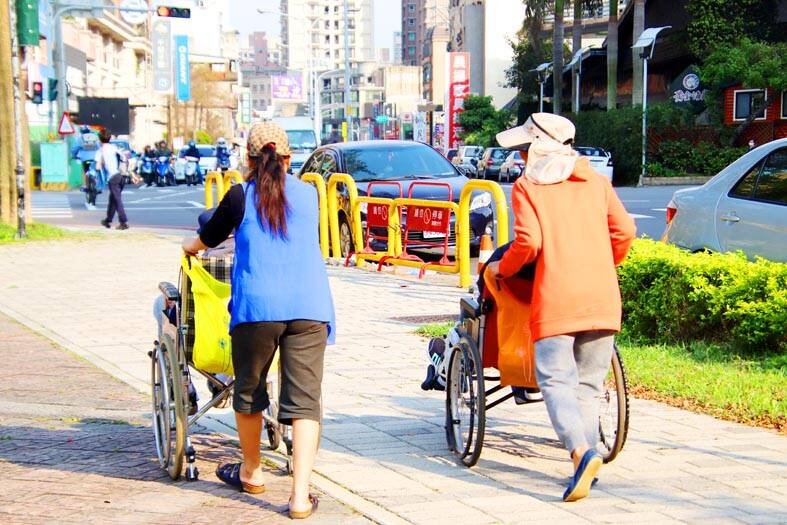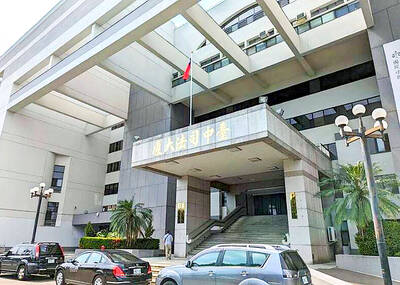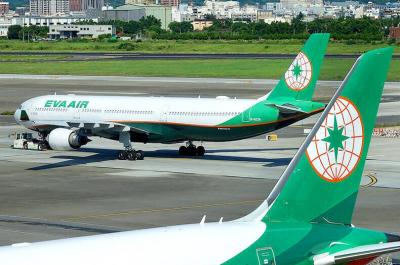The Executive Yuan yesterday approved the long-term care 3.0 program’s implementation starting next year, which is to feature reduced waiting time for outpatients to receive care and expanded geographical coverage of facilities.
Premier Cho Jung-tai (卓榮泰) approved the Ministry of Health and Welfare plan and instructed it to prepare for its rollout by working closely with the private sector, Cabinet spokesperson Michelle Lee (李慧芝) told a post-Cabinet meeting news conference in Taipei.
Deputy Minister of Health and Welfare Lue Jen-der (呂建德) during the meeting reported on the program’s achievements and unveiled its targets, an Executive Yuan statement said.

Photo: Huang Mei-chu, Taipei Times
Long-term care 2.0, the current iteration of the program, owed its success to collaboration between the public and private sectors, Lue said.
Since 2016, the number of program recipients has increased 8.4 times to 756,000, its workforce increased fourfold to 100,000 and funding increased 18.7 times to NT$92.6 billion (US$2.81 billion), he said.
Long-term care facilities increased 20.9 times to 15,000 and the average waiting period for out-of-hospital patients for receiving care decreased 13 times to four days during the same period, he added.
Nearly 90 percent of program recipients were satisfied with the services provided, the statement cited Lue as saying.
The new version of the program is to focus on building a long-term care facility within 10 minutes’ drive of every household while improving the quality of care, he said.
The program would divide Taiwan into administrative regions, he added.
It would decrease the average waiting time for outpatients to obtain the services of carers, an area in which the ministry has already made strides, Lue was cited as saying.
The target is to reduce waiting times to minus-one day, meaning long-term care arrangements would be made the day before a patient leaves hospital, he said.
The program would integrate hospitals and long-term care to boost the quality of care for moderately or severely impaired people, Lue said.
The number of recipients would be increased from people aged 65 and older, indigenous people aged 55 and older, and people with disabilities to younger age groups, he said.
Medical data showed the average age of stroke victims is declining in Taiwan, he added.
The centerpiece of the new program is making improvements to community-based care as envisioned in the current program, ministry officials were cited as saying.
The program would additionally pre-emptively promote health, strengthening family-based care solutions, making better use of algorithms, implementing end-of-life care, and facilitating career education and training, they said.

The first global hotel Keys Selection by the Michelin Guide includes four hotels in Taiwan, Michelin announced yesterday. All four received the “Michelin One Key,” indicating guests are to experience a “very special stay” at any of the locations as the establishments are “a true gem with personality. Service always goes the extra mile, and the hotel provides much more than others in its price range.” Of the four hotels, three are located in Taipei and one in Taichung. In Taipei, the One Key accolades were awarded to the Capella Taipei, Kimpton Da An Taipei and Mandarin Oriental Taipei. Capella Taipei was described by

The Taichung District Court yesterday confirmed its final ruling that the marriage between teenage heir Lai (賴) and a man surnamed Hsia (夏) was legally invalid, preventing Hsia from inheriting Lai’s NT$500 million (US$16.37 million) estate. The court confirmed that Hsia chose not to appeal the civil judgement after the court handed down its ruling in June, making the decision final. In the June ruling, the court said that Lai, 18, and Hsia, 26, showed “no mutual admiration before the marriage” and that their interactions were “distant and unfamiliar.” The judge concluded that the couple lacked the “true intention of

EVA Airways today confirmed the death of a flight attendant on Saturday upon their return to Taiwan and said an internal investigation has been launched, as criticism mounted over a social media post accusing the airline of failing to offer sufficient employee protections. According to the post, the flight attendant complained of feeling sick on board a flight, but was unable to take sick leave or access medical care. The crew member allegedly did not receive assistance from the chief purser, who failed to heed their requests for medical attention or call an ambulance once the flight landed, the post said. As sick

INDUSTRY: Beijing’s latest export measures go beyond targeting the US and would likely affect any country that uses Chinese rare earths or related tech, an academic said Taiwanese industries could face significant disruption from China’s newly tightened export controls on rare earth elements, as much of Taiwan’s supply indirectly depends on Chinese materials processed in Japan, a local expert said yesterday. Kristy Hsu (徐遵慈), director of the Taiwan ASEAN Studies Center at the Chung-Hua Institution for Economic Research, said that China’s latest export measures go far beyond targeting the US and would likely affect any country that uses Chinese rare earths or related technologies. With Japan and Southeast Asian countries among those expected to be hit, Taiwan could feel the impact through its reliance on Japanese-made semi-finished products and